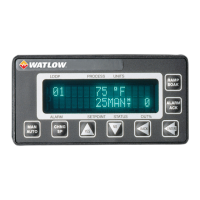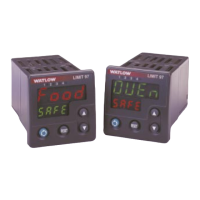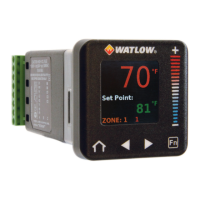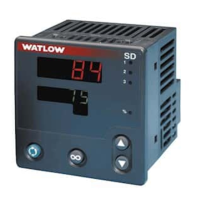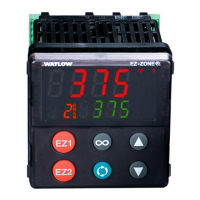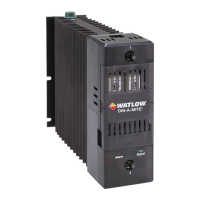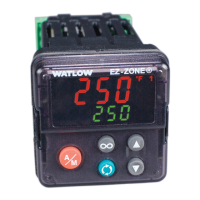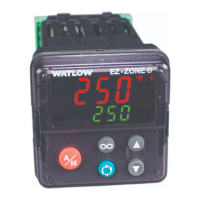Watlow F4T • 134 • Chapter 5 Function Reference
Input Voltage
Use this function to integrate a signal from a field I/O device that provides a high or low volt-
age signal indicating its state. This FB is found on the canvas of the FB diagram. The number
of these FBs that are available depends on the number of digital I/O flex modules installed
and configured as voltage inputs.
Signals
Direction Label Type Function
Transmitter - - - - Digital
Transmitter is inactive (off) when measured voltage is less
than 2V and active (on) when greater than 3V
Name
Uniquely identify this FB using up to 20 alphanumeric characters.
Direction
To configure the I/O point to detect a voltage level as a digital input, set Direction to Input
Voltage.
Digital Outputs
Use a digital output block to drive an external device. Output blocks can accept either a digi-
tal (on/off) signal or an analog percentage signal. The following FBs are discussed in this sec-
tion:
SSR and Switched DC/Open Collector: drive outputs on flex modules that are appropriate for
loads that can be switched frequently.
Electromechanical and NO-ARC Relays: drive outputs on flex modules that are appropriate for
loads that need not be switched frequently.
Solid-State Relay - Switched DC/Open Collector
These blocks are found on the canvas in the Function Block Diagram editor. The number of
these blocks available depends on the number of solid state relays, switched DC outputs and
open collector outputs on the flex modules installed in the controller.
Signals
Direction
Label Type Function
Receiver
- - - -
Analog %
or Digital
Off or 0%: the output is off.
Between 0% and 100%: the output switches according to
the Time Base Type setting.
On or 100%: the output is on.
Name
Uniquely identify this FB using up to 20 alphanumeric characters.
Time Base Type
Choose the method used to operate the output when the input is an analog percentage. With
either of the methods the output switches off and on such that the average amount of time
the output is on equals the desired percentage.
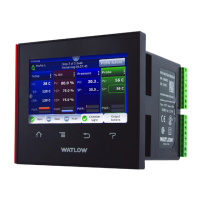
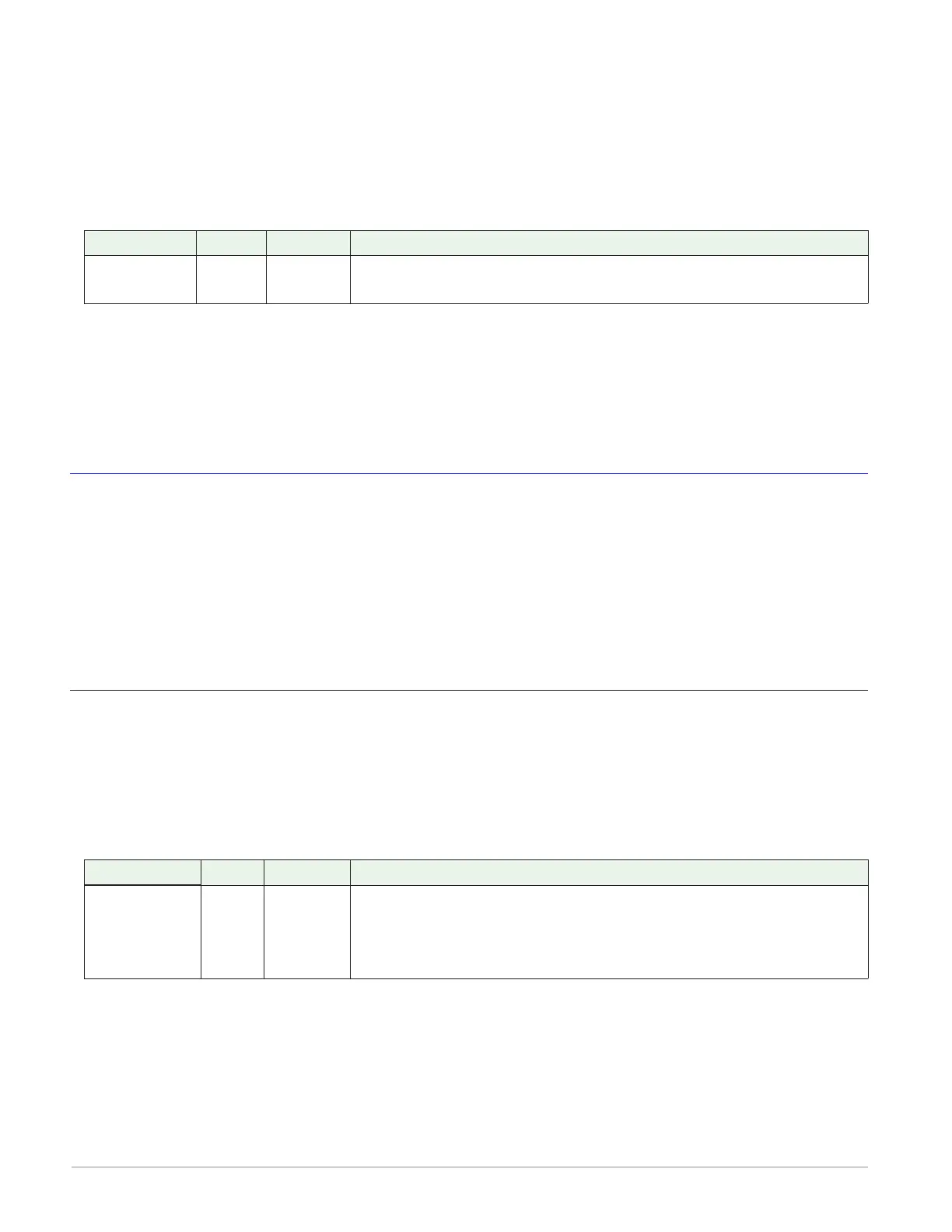